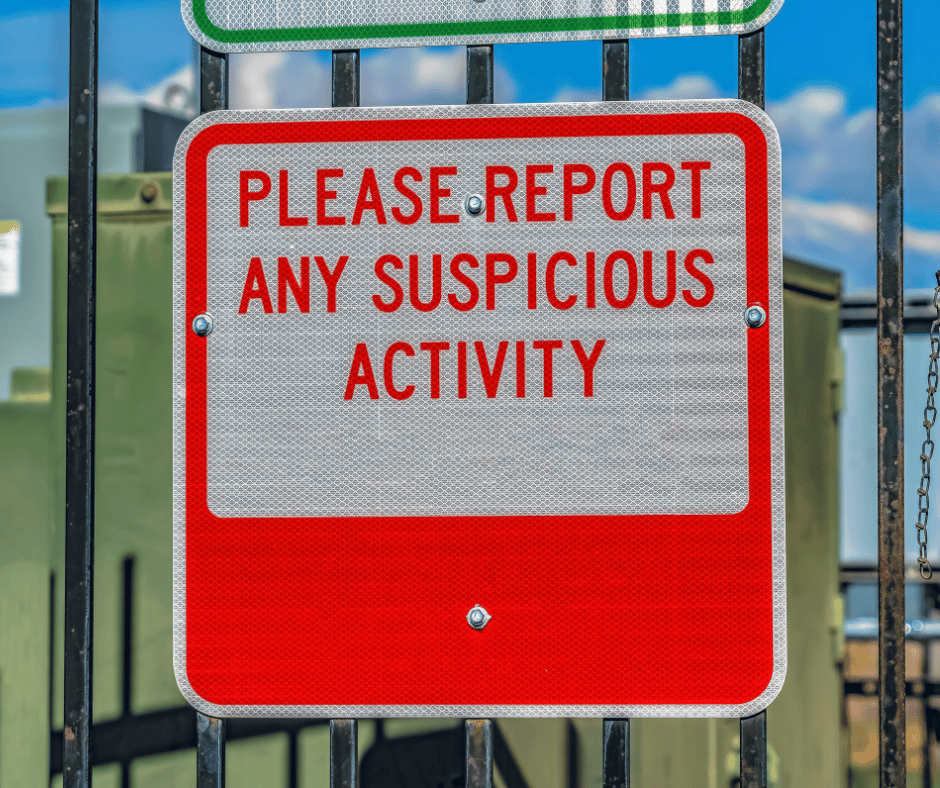Understanding the Basics of a Suspicious Activity Report (SAR)
Understanding the Basics of a Suspicious Activity Report (SAR)
In the financial world, suspicious activity reports (SARs) are the unsung heroes that help keep financial institutions and their customers safe from fraud, money laundering, and other financial crimes. But what exactly are suspicious activity reports, and how do they impact the world of finance?
In this blog post, we will explore the fundamentals of SARs, how they are identified and reported, the consequences of non-compliance, best practices for effective suspicious activity report preparation, and their impact on financial crimes and law enforcement. Additionally, we will discuss tips and threat reporting software as well as mass notification systems. So buckle up and get ready to dive into the intriguing world of SARs!
Quick Summary
- Suspicious Activity Reports (SARs) are documents used to report suspicious activities in order to detect and prevent money laundering, terrorist financing, and other financial crimes.
- Financial institutions must be trained to recognize red flags for suspicious activity and adhere to the filing process & requirements of SARs.
- Non-compliance with SAR filing can lead to hefty fines or criminal charges. Best practices include crafting clear narratives & utilizing available resources.
The Fundamentals of Suspicious Activity Reports (SARs)
SARs, regulated under the Bank Secrecy Act (BSA) and the USA Patriot Act, serve as vital tools in monitoring and reporting suspicious financial activities. They help these acts achieve their goal of detecting and thwarting money laundering, terrorist financing, and other financial crimes.
The regulatory framework for SARs ensures that financial institutions report suspicious activities within a specified timeframe, maintaining strict confidentiality while providing essential information about the activities in question.
Definition and Purpose of SARs
An SAR is a document that financial institutions must file with the Financial Crimes Enforcement Network (FinCEN) to report known or suspected violations of law or suspicious activity. Financial institutions are encouraged to file a SAR even when dollar thresholds are not met to prevent potential harm caused by financial crimes.
SARs serve to uncover and halt money laundering, terrorist financing, tax evasion, and other financial crimes by mandating financial institutions to report out-of-the-ordinary transactions. This includes transactions that involve unlicensed money services business, insider abuse, transactions with a total of $5,000 or more where a suspect can be identified, and transactions with a total of $25,000 or more, regardless of potential suspects.
Regulatory Framework
The regulatory framework for SARs is established by the Bank Secrecy Act (BSA) and further expanded by the USA Patriot Act to combat terrorism and other unlawful activities. Financial institutions are obliged to submit SARs within the established timeframe following the identification of suspicious activities.
Regulations ensure the confidentiality and timeliness of SARs filing. Financial institutions that do not adhere to the regulations may incur civil and criminal penalties. By requiring SARs, the BSA and the USA Patriot Act aim to provide law enforcement authorities with valuable information that can be used to investigate and prosecute financial crimes.
Identifying Suspicious Activities
Financial institutions must be vigilant in identifying and reporting suspicious activities, as failure to do so can result in severe consequences. Some indications of suspicious activity include sudden changes in account activity, insider activity, and potential money laundering. It is crucial for these institutions to report suspicious activity promptly and accurately.
A more in-depth exploration of the different types of suspicious activities and the role technology plays in their detection will enhance our understanding of how to identify these red flags.
Red Flags for Suspicious Activity
Red flags for suspicious activity can vary, but common patterns include unusual transaction amounts, frequency, or locations. It is crucial for financial institutions to stay alert to these warning signs, as they can signal criminal activity and potentially lead to financial crimes such as money laundering. To help combat this, it’s important to report suspicious transactions when they are detected.
Financial institutions should train their front-line staff to recognize transactions that may be suspicious and report them to the appropriate individual responsible for filing the suspicious transaction report. Taking a proactive stance in identifying and reporting suspicious activities enables financial institutions to play a pivotal role in fighting financial crimes and safeguarding their customers.
Role of Technology in Detecting Suspicious Activities
In today’s digital age, technology plays a crucial role in detecting suspicious activities. Computerized systems can flag potential issues for further investigation, significantly improving the efficiency and accuracy of detecting suspicious transactions.
There are two types of surveillance monitoring systems available for financial institutions: rule-based and intelligent systems. Rule-based systems rely on predefined rules to identify suspicious transactions, while intelligent systems employ machine learning algorithms to detect anomalous patterns and deviations from expected activity.
Utilizing these advanced technologies allows financial institutions to maintain an edge over potential financial criminals, thereby ensuring their customers’ safety and security.
Filing Process and Requirements for SARs
Once suspicious activity is detected, financial institutions must follow the filing process and requirements for SARs. This involves:
- Submitting a SAR within 30 days of detecting the suspicious activity
- Maintaining strict confidentiality
- Providing essential information about the activity in question
We’ll examine the requirements for timeline and confidentiality, along with the fundamental elements of a SAR.
Timeline and Confidentiality
Financial institutions are required to file SARs within 30 days of detecting suspicious activity. In the case of ongoing suspicious activity, it is recommended to file an updated SAR at least every 90 days. This timely reporting ensures that law enforcement authorities receive critical information in a prompt manner, allowing them to take swift action against potential financial crimes.
Confidentiality is a crucial aspect of SAR filing. Unauthorized disclosure of SAR information is considered a federal criminal offense, and financial institutions must adhere to strict confidentiality requirements when filing SARs. Upholding confidentiality allows financial institutions to shield themselves from possible legal repercussions and also protect their customers’ sensitive information.
Essential Elements of a SAR
A SAR must include five key elements:
- Personal and financial details of the parties involved
- A description of the suspicious activity
- The date and amount of the transaction
- A written narrative
Providing accurate and detailed information in these elements is crucial for appropriate law enforcement authorities, law enforcement agencies, and financial institutions to effectively investigate and take action against suspicious activities.
To ensure that these elements are comprehensive and accurate, financial institutions should conduct thorough research and analysis to acquire substantial information regarding the potentially suspicious activity. They should also fill out all objective data fields and compose a clear and comprehensive SAR narrative, detailing the known or suspected criminal violation or suspicious activity, the individuals or entities involved, and the location and timing of the activity.
Consequences of Non-Compliance
Failure to comply with SAR filing requirements can result in severe penalties for financial institutions and potential legal consequences for account holders. Financial institutions may face fines, sanctions, and reputational damage, while account holders could face frozen accounts, legal investigations, and potential criminal charges.
We should explore in greater detail the penalties for financial institutions and the implications for account holders.
Penalties for Financial Institutions
Non-compliance with SAR filing requirements can lead to significant consequences for financial institutions. They may incur fines, sanctions, and reputational harm, which can have long-lasting effects on their business operations and customer trust. Financial institutions must take their obligations seriously and ensure they adhere to SAR filing requirements to avoid these repercussions.
The penalties for non-compliance can vary depending on the jurisdiction and the seriousness of the violation. These can include:
- Hefty fines
- Regulatory limitations
- Revocation of licenses
- Criminal charges for the individuals involved in the non-compliance
Financial institutions need to familiarize themselves with the regulations and adhere to them diligently to steer clear of such grave consequences.
Implications for Account Holders
Account holders may also face severe consequences if a SAR is filed about their activities. Their accounts may be frozen as a precautionary measure, which can have a significant impact on their finances and daily life. They may also be subject to legal investigations and potential criminal charges, depending on the nature of the suspicious activity.
It is crucial for account holders to be aware of the potential ramifications of having a SAR filed about their activities. If they become the subject of an investigation due to a filed SAR, they should promptly seek the counsel of an experienced criminal defense lawyer to protect their rights and interests.
Best Practices for Effective SAR Preparation and Submission
To ensure effective SAR preparation and submission, financial institutions should follow best practices. These include crafting clear and detailed narratives, utilizing available resources, and maintaining strict confidentiality. By adhering to these best practices, financial institutions can enhance their SAR filing process and better protect their customers from financial crimes.
We’ll further explore these best practices.
Crafting a Clear and Detailed Narrative
An effective SAR narrative should provide a detailed description of the suspicious activity, including supporting documentation and relevant records. A well-constructed narrative can greatly improve the usefulness of the SAR, allowing law enforcement agencies and financial institutions to better understand the nature of the suspicious activity and take appropriate action.
Creating a clear and detailed narrative requires financial institutions to use concise and clear language, include pertinent documentation and records, and ensure the accuracy and completeness of the information provided. By following these guidelines, financial institutions can ensure that their SARs are comprehensive, precise, and effective in combating financial crimes.
Utilizing Available Resources
Financial institutions should make use of available resources to assist with SAR preparation and submission. Some resources that can help financial institutions navigate the SAR filing process include:
- The Financial Crimes Enforcement Network (FinCEN) website, which offers guidance documents and online tutorials
- The Office of the Comptroller of the Currency (OCC) website, which provides resources and information on SAR filing requirements
- The Consumer Financial Protection Bureau (CFPB) website, which offers guidance and resources for financial institutions
By utilizing these resources, financial institutions can ensure they are properly prepared for SAR filing.
In addition to these resources, financial institutions should also consider consulting with experts when necessary. By thoroughly reading guidance documents, utilizing online tutorials, and seeking expert advice, financial institutions can ensure that they are fully prepared to effectively submit SARs and combat financial crimes.
The Impact of SARs on Financial Crimes and Law Enforcement
SARs play a vital role in combating financial crimes and supporting law enforcement efforts. They provide valuable information to FinCEN and other government agencies that can be used to detect and prosecute financial crimes, such as money laundering and terrorist financing.
We will look into how FinCEN and other government agencies use SARs, as well as the significance of cooperation between financial institutions and law enforcement authorities.
Use by FinCEN and Other Government Agencies
FinCEN and other government agencies analyze SAR data to identify trends, vulnerabilities, and potential indicators of financial crimes, such as terrorist financing or drug trafficking. This analysis helps law enforcement agencies better focus their resources and efforts, resulting in more effective investigations and prosecutions.
In addition to FinCEN, other government agencies such as the Federal Bureau of Investigation (FBI), Drug Enforcement Administration (DEA), and Internal Revenue Service (IRS) also utilize SAR data in their investigations. By providing these agencies with valuable information, SARs contribute significantly to the fight against financial crimes and the protection of our financial system.
Collaboration with Law Enforcement Authorities
Collaboration between financial institutions and law enforcement authorities is essential for the effective use of SARs in detecting and prosecuting financial crimes. The process involves:
- Financial institutions submitting SARs.
- Law enforcement and supervisory agencies analyzing the data to identify potential risks.
- Taking appropriate action based on the analysis.
A close collaboration between financial institutions and law enforcement authorities enhances the effectiveness of combating financial crimes, protecting our financial system’s integrity, and ensuring customer safety and security. This collaborative approach is crucial for the continued success of SARs as a powerful tool in the fight against financial crime.
Full Summary
Suspicious activity reports (SARs) play a pivotal role in detecting and preventing financial crimes, such as money laundering and terrorist financing. Financial institutions must be vigilant in identifying and reporting suspicious activities, adhering to filing requirements, and following best practices for effective SAR preparation and submission. Through collaboration with law enforcement authorities and the effective use of technology, SARs can help protect our financial system and safeguard the interests of customers.
Frequently Asked Questions
What is the suspicious activity report?
An SAR is a document that financial institutions must file with the Financial Crimes Enforcement Network (FinCEN) as soon as they detect a suspected case of money laundering or fraud.
SARs are an important tool for law enforcement to detect and investigate financial crimes. They provide a detailed record of suspicious activity that can be used to identify potential criminal activity. SARs can also be used to identify patterns of behavior that may indicate money laundering or other financial crimes.
What triggers a SAR report?
Financial institutions must file a suspicious activity report (SAR) if they notice any out-of-the-ordinary activity, suspect insider trading, or see transactions aggregating over specific dollar amounts.
SARs are an important tool for law enforcement to detect and investigate financial crimes. They provide a way for financial institutions to alert authorities to potential criminal activity. Financial institutions must take all reasonable steps to ensure that SARs are filed in a timely manner and with accurate information.
When must a SAR be filed?
No later than 30 calendar days after the date of initial detection of facts that may constitute a basis for filing.
How can technology be used to detect suspicious activities?
Technology can be used to detect suspicious activities through monitoring systems that flag potential issues for further investigation, such as rule-based and intelligent surveillance.
These systems can be used to identify potential threats and alert authorities in a timely manner. They can also be used to track and analyze data to identify patterns and trends that may indicate criminal activity.
By leveraging technology, law enforcement can enhance their operations.
What are the consequences for financial institutions that do not comply with SAR filing requirements?
Financial institutions that do not comply with SAR filing requirements may face hefty fines, sanctions, and significant reputational damage.
These consequences can be severe, and it is important for financial institutions to understand their obligations and take the necessary steps to ensure compliance.
SaferWatch In the News:
- Motorola Solutions and SaferWatch Align to Support School Safety
- App Developed for Educators In Case of A School Shooting
- BCPS Unveils Alyssa’s Alert In New Initiative To Add Additional Layer of Security for Students and Staff
- Stand With Parkland Partners With SaferWatch Mobile App to Protect Schools
- Alyssa’s Law Reviewed by MSD Commission
- BCPS uses SaferWatch app to comply with Alyssa’s Law
- BSO: 12-Year-Old Boy Arrested For Making School Shooting Threat
- Fort Lauderdale Police Investigate Three School Threats




























